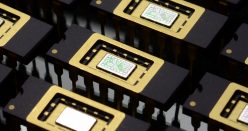ALIS acquired from Andrew (http://rtftechnologies.org). CF flange, MHV feedthrough, and HV PSU are on order.
Ion source links: http://wiki.zeloof.xyz/index.php/Ion_Source
Abstract: Anode layer ion sources are one type of gridless (no acceleration or focusing grids/screens) closed-drift (electron and plasma movement is confined due to E x B force) ion sources and are therefore a simple way to make a confined ion/plasma stream. These sources commonly operate under partial vacuum in O2/N2/Ar environments. They have many applications, one of which is a high power directional plasma cleaning source which has many advantages over glow discharge or inductively/capacitively coupled plasmas. Their cylindrical geometry can be explained because it allows the E x B currents to converge and close in on themselves rather than being swept to one side in non-cylindrical designs. They are similar to inverted magnetrons and end-Hall ion thrusters in construction and in operation except they often do not require external neutralization for the ion beam.
Neutralizing electrons come from the from the surroundings and collisions of ions with the discharge channel walls because the anode is held at a higher potential than that of a hall effect source and they therefore operate in the self-sustained discharge area. Thus, some of the electrons from the cathode escape into the ion beam and neutralize the space charge on the ions. The extent of space charge neutralization can be related to the electric field strength and therefore the voltage applied to anode. These high voltages are typically in the 800v-2000v range and ALIS devices can operate up into the tens of millitorr down to the 1e-5 torr range at higher voltages.
The source consists of an annular anode which is held at a high DC potential to the inner and outer magnetic poles which are held at ground potential. The magnetic field is provided by either a permanent magnet (rare earth) or electromagnet. These magnets confine electron motion to a small area above the anode and therefore increase ionization efficiency. Electromagnets can be used for external beam focusing and plasma density distribution adjustment.
The theory of operation is described as ion acceleration in crossed electric and magnetic fields by azimuthal electron drift (hall effect). Electrons are trapped by the intense magnetic field from the magnet(s) and the electrons are forced to drift (oscillate) at their resonant frequency (due to reduced mobility of these electrons in a magnetic field) perpendicularly to the plane in which the electric and magnetic fields are crossed (E x B plane). The electric field is from the high voltage potential between anode ring and inner and outer grounding poles. The intense localized electron movements above the anode ring ionize the gas in that immediate area. This ionization occurs in a very thin layer that exists directly above the anode because of rapidly increasing plasma potential as the anode is approached due to high electrical potential to repel the electrons near the anode as well has high electron temperatures near the anode. These two factors cause the neutralized ion beam to be accelerated away from the anode. This acceleration is described in terms of the Je x B force created from the electron drift-induced hall currents around the anode and the magnetic field.







One thought on “Anode Layer Ion Source (RTFtechnologies)”